How To Become a Fashion Designer: An unique designer of clothing and accessories. Designers bring their ideas to life by referencing current trends in fashion and their in-depth understanding of materials and style. Business education is also necessary for careers in fashion design. Successful designers combine their originality with strong management, sales, and marketing abilities. Bachelor’s degrees are typically held by fashion designers.
The pay for a profession in fashion design is above average. How do fashion designers, however, begin their careers? Fashion designers frequently put in long hours before breaking into the field, just like other art and design professions. How to become a fashion designer is discussed in this article.
Recommended: How to become a successful musician
What Do Fashion Designers Do?
Clothing and accessories are made and designed by fashion designers. High fashion, ready-to-wear clothes, mass-market clothing, sportswear, evening wear, accessories, or footwear might all be areas of specialization for them.
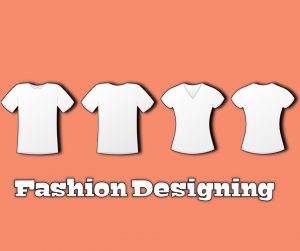
Designers study next trends in fashion to produce designs that are futuristic. They work with designers on projects and frequently use design tools to make items. Fashion designers generate drawings, assess textiles, and produce a prototype at the start of a design project.
Some fashion designers produce lines or collections that highlight a subject or trend. They create items to display at the New York, Paris, Milan, and London fashion weeks. Other designers create seasonal collections for well-known companies, pitching concepts to creative directors.
Many fashion designers also receive business and marketing training. Experience in fashion merchandising aids designers in getting their products into stores and marketing them to consumers.
Also see: How to become a good and wonderful singer
Where Can a Designers of Fashion Work?
The production and wholesale sections of big fashion businesses employ fashion designers. They produce clothing and accessories in these jobs, which brands then sell to stores. Almost a quarter of fashion designers take on freelancing positions, working on projects for specific clientele. Some of these designers start their own clothing companies or produce upscale bespoke garments.
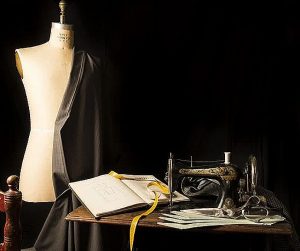
Long hours and travel are frequent requirements of the job. The hours of designers who plan fashion presentations or work on manufacturing deadlines are sometimes long. Working in New York or Los Angeles is where most American fashion designers are headquartered.
Recommended: Countries with the Most Beautiful Women in the World
How to Become a Professional Fashion Designer
A degree in fashion design can aid designers in starting their professions. But success is not always assured by a degree alone. To succeed in the fashion sector, fashion designers also require a solid portfolio, professional connections, and job experience. Success in a career also depends on talent. Designers need to be aware of their brand’s identity, style, and market niche.
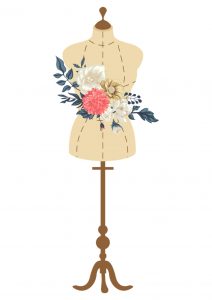
Successful fashion designers advance through the ranks. Many people start honing their abilities before enrolling in a fashion program. Future designers can increase their chances of admission to exclusive fashion schools by learning to sew, keeping up with current trends, and using design software. Designers frequently work as stylists, fashion buyers, and assistants to well-known designers after receiving their degrees. These positions aid designers in networking and skill development.
1. Complete a degree program in fashion design: Several fashion designers have a bachelor’s degree in art or design. Students that enroll in a fashion design degree study textiles, fashion theory, and color theory. Additionally, they get knowledge about how to develop styles with CAD software. Project-based learning is used in fashion design courses to assist students develop their abilities and portfolios.
Programs leading to degrees in fashion design include curriculum in business, marketing, and fashion merchandising. These abilities are used by designers to start a line, assess style demand from customers, and turn a profit. Seniors who have completed a fashion design program may create a collection for a school fashion show.
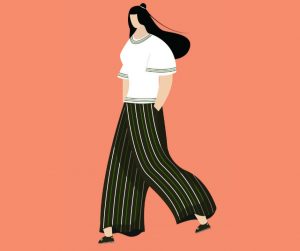
Recommended: Best Law Schools In The World 2022
2. Obtain First-Hand Experience: A fashion career can be prepared for with a degree in fashion design or fashion merchandising. Designers, however, also require practical experience. Fashion designers should look for internship opportunities while in school. A lot of institutions connect prospective designers with businesses looking to hire interns. Students that are participating in internships do their work under the guidance of an accomplished fashion designer. Internships give students hands-on exposure to the commercial side of the fashion industry. While in class, students perfect their skills and aesthetics, an internship offers job training.
Students should take into account contract or part-time employment prospects in addition to internship experiences. Students can develop their portfolios and perhaps create their own lines by working for a small business. Designers may improve their resumes and network in the business by working with a prominent brand.
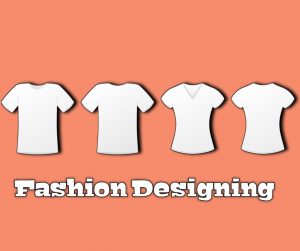
3. Connect with Others in the Sector: Networking aids fashion designers in finding employment possibilities, obtaining clients, and advancing their careers, much like it does for other creative professions. Designers should start building their network as soon as they can, even before enrolling in a fashion program. Meeting fashion industry experts is made possible via networking events held at schools.

Make connections with other designers, vendors, purchasers, and other professionals in the field. Once you start freelancing or searching for full-time jobs, those relationships may come in handy.
Recommended: Countries with the best education system in the world
4. Create a design portfolio: Strong design portfolios are necessary for careers in fashion. Before enrolling in fashion colleges, many fashion designers begin to develop their portfolios. To display their creativity and abilities, students develop their portfolios. Designers may wish to highlight their technical abilities or demonstrate variety in their portfolio by including ready-to-wear and bespoke high fashion outfits.
Designers maintain updated portfolios during the course of their careers. Designers can build their portfolios through internships, entry-level work, and stylist positions.
5. Keep current with the fashion industry: Fashion designers must stay current with fashion news and trends. Designers must invest effort in keeping up with fashion cycles in a sector that undergoes seasonal change.
Fashion designers may access a number of tools to keep current. Trends and information about the sector are displayed via professional associations, fashion periodicals, and fashion shows. Maintaining trends also involves following other fashion designers and attending red carpet events. Then, designers might apply fresh trends to their next projects.
Recommended: Differences Between Aims And Objectives
What skills Are Required for Fashion Designers?
Every person has a certain set of abilities. The abilities listed below are necessary for success as a fashion designer.
1. Creativity and artistic talent: A natural talent is the most crucial quality for every artist or fashion designer. You want people to be able to identify and appreciate your art. Before transitioning to the fashion industry, many fashion designers worked as architects, graphic designers, or in other related disciplines. Many creative abilities are natural and cannot be taught, but you may develop your skill set via regular practice and formal instruction.
2. Skills in communication: To build their brand, top fashion designers require effective communication abilities. You could get the chance to work on a design team or run your own at some point in your career. Instead of waiting for guidance while working with teams, contribute your thoughts and research.
Effective collaboration involves listening extensively. A collection isn’t being created by you alone. To give feedback and encourage the evolution of your designs, you must pay attention to what your team members are saying.
Recommended: Advantages and Disadvantages of centralization
3. Drawing and sewing abilities: Any garment designer must possess the essential talent of sewing. Although complete proficiency in fundamental fashion construction skills, like as operating a sewing machine, is not required, it would behoove any aspiring designer to get a deep understanding of the craft involved in creating your ideas.
Your ability to choose the ideal fabric for your outfits will improve if you are familiar with the various materials and the characteristics that define them.
4. knowledge of textiles and materials: By handling textiles, adjusting the tension of various threads, and practicing embroidery, you may get a feel for the diverse components of garment design. Use tools like technical workshops, online tutorials, and craft books that take you through the making of a garment step by step.
Making a fabric choice is crucial to communicating your ideas. Touch and feel the textiles you want to use before making any creative decisions; doing so may prevent you from fully comprehending how they will flow and drape on a human body.
Also see: Differences Between Pharmacy and Pharmacology
Conclusion
Today’s fashion industry is extremely competitive. If you want to work in this business, you will need to work harder and learn a variety of new abilities.It involves understanding of Visual Arts, General Design, and even Graphic Design in addition to earning a Bachelor’s degree in Fashion Design. If you truly want to be the best, do that.

Edeh Samuel Chukwuemeka, ACMC, is a lawyer and a certified mediator/conciliator in Nigeria. He is also a developer with knowledge in various programming languages. Samuel is determined to leverage his skills in technology, SEO, and legal practice to revolutionize the legal profession worldwide by creating web and mobile applications that simplify legal research. Sam is also passionate about educating and providing valuable information to people.